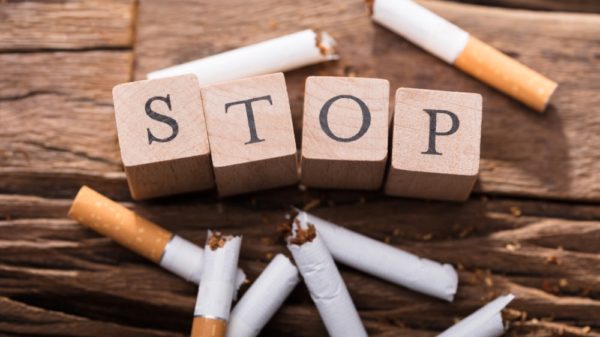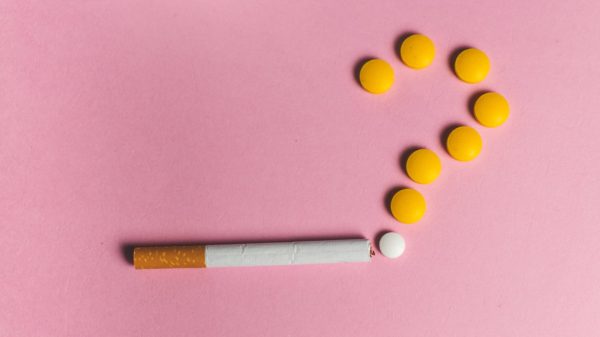Smoking is the most common way to consume tobacco, either for recreational use or to satisfy unending cravings. The dangers of cigarette smoking often supersedes its recreational value, and the most affected part is often the respiratory system, mostly the lungs. Thankfully, it is possible to quit smoking and remedy the harm it causes to the lungs through various lung cleanse methods. These methods include exercise, deep breathing, nature bathing, and diet – all of which constitute a holistic approach to lung cleaning.
The Meaning of Lung Cleanse
Lung cleanse is the process of eliminating toxins and related damage from the respiratory system. Lung cleanse for smokers encompasses all the methods and procedures used to eliminate these toxins accumulated through smoking from the body.

Pollutants such as dust, pollen and smoke affect the quality of the air we breathe. Prolonged exposure to such pollutants affect the respiratory system and can result in health problems such as increased respiratory symptoms, decreased lung function and even lung cancer. A person suffering from respiratory symptoms may experience persistent coughs, irritation of the airways, or have difficulty breathing.
Fortunately, the lungs usually begin to heal themselves as soon as their exposure to pollutants stops. This is the natural lung cleanse process that safeguards against respiratory diseases that might result from exposure to environmental air pollutants.
Lifestyle and habits such as cigarette smoking can overwhelm the natural lung detox process.
Smoking cigarettes is generally bad for your lungs. The smoke released from the combustion of these components contains toxins and carcinogens that enter the lungs during inhalation.
The smoke from tobacco or wood is also associated with irritation of the throat and lungs. This tends to result in serious damage from long term inflammation. Over time, this kind of prolonged irritation can cause long-term lung damage.
There is no substantial research that links the smoking of tobacco to an increased risk of cancer. Smoking cigarettes, however, have serious effects on your respiratory health.
According to multiple observational studies, there is a close association between cigarette smoking and symptoms of chronic bronchitis. These symptoms include chronic cough, shortness of breath, wheezing, and production of sputum, especially in the morning.
Some evidence also suggests that heavy smoking of cigarettes could be related to episodes of acute bronchitis and respiratory illness. This may explain why it is often challenging to quit smoking cigarettes once you develop the habit.
Furthermore, studies show that combined use of tobacco and marijuana is common among recreational smokers. This appears to be even more addictive among the users hence can have more serious withdrawal symptoms on those who quit smoking.
Nonetheless, many people quit tobacco use successfully and enter the phase of lung cleanse. During lung detox, the body gets rid of the toxins accumulated from prolonged tobacco use. This happens during the first few weeks or days of getting clean (or quitting smoking).
Benefits of Quitting
Quitting smoking can reverse many of the negative effects of smoking. Though the onset of lung cleanse following a recent cessation can be characterized with symptoms of withdrawal, the individual often gets much better once the withdrawal symptoms begin to subside. And, according to research, this improvement phase can start within a matter of days or weeks. More specifically, those who undergo a successful lung cleanse experience the following benefits:
1. Improvement in chronic cough, wheeze and sputum production
Cigarette smokers often experience symptoms of chronic bronchitis such as chronic cough, wheeze and sputum production. This normally happens as a result of the repeated irritation and damage to the airway tissue and the lungs.
With proper lung detox, you can achieve normal respiratory health that is akin to non-users.
2. Reduced risk of chronic bronchitis
Bronchitis is one of the most common conditions associated with tobacco smoking. Chronic bronchitis can also result from long-term exposure to polluted air, pollen, dust and environmental fumes. However, smoking remains the most common cause.
Data from multiple longitudinal studies of hundreds of habitual tobacco smokers suggest the same outcome: tobacco smoking significantly increase one’s risk of contracting chronic bronchitis.
Various lung detoxification and lung cleanse approaches have been found to reduce the risk by huge margins. Evidence suggests that people who have quit smoking and undergone lung cleanse are at no likelihood of exhibiting the symptoms of chronic bronchitis. Their chances of suffering the respiratory problem is the same as that of non-smokers.
3. Greater social health
Tobacco smoke contains chemicals that are harmful to the lungs. Though various proponents tout bongs, vaporizers and other alternative means of using tobacco as being safe, some research indicates that these devices do not decrease the amount of dangerous chemicals in the smoke.
Your respiratory system is not the only thing that smoking affects. Researchers report that smoking has a profound effect on the user’s social life. Social stigma is therefore a big problem among tobacco smokers.
Quitting smoking and learning how to clean your lungs is therefore the surest way out of the social stigma associated with tobacco use. Lung cleanse and lung detoxification in particular can go a long way in helping you recover your social health.
Tobacco users who successfully learn how to clean lungs often stop exhibiting symptoms of inflammation of the respiratory pathways. These symptoms include coughing and excessive production of sputum. As a result, they are able to become less conspicuous and seamlessly reintegrate into society.
Tips on How to Clean Lungs
Lung cleanse for smokers often start by itself as a natural process once you quit smoking. Even from years of tobacco use, the body is wired to commence the process of lung cleanse immediately you quit smoking by slowly getting rid of the accumulated toxins. This is because the lungs are generally a self-cleaning organ.

Still, there are things that you can do to help your lungs function at optimal levels. If you have a health condition such as asthma, cystic fibrosis or COPD that causes breathing difficulties, a lung cleanse will be crucial. Even in the absence of any of these conditions, you will benefit from a lung cleanse as part of your recovery from heavy tobacco use.
Your lifestyle and diet can have a profound effect on your lung cleanse process. What constitutes your diet, your environment and the activities you engage in can make or break your lung detoxification. This is because there are certain foods that stimulate the production of mucus. Intake of such foods during your lung cleanse can slow down the lung detox process.
It is important to note that the production of mucus increases in the lungs once they are exposed to pollution for some time. Cigarette smoke is one of the most serious forms of lung pollutants in this regard. And, with the increased mucus in the lungs as it tries to catch the foreign articles and microbes, the affected person may experience chest congestion. The chest congestion also occurs due to the inflammation of the breathing pathways within the chest cavity.
It is therefore important to understand how to clean your lungs. This enables you to avoid the activities, surroundings and foods that derail lung cleanse while embracing those that support lung detox.
Here are the various lung cleanse methods that can help reduce the effects of tobacco smoke in the lungs. The approaches work by helping to open up the airways, reduce inflammation, and improve lung capacity.
Exercise as a Lung Detox Method
Physical activity has numerous beneficial effects on the body and overall health and wellbeing. Respiratory health is one of the health aspects that hugely benefit from systematic physical exercise. Though many people do not know it, there are ways in which we can help our lungs to work better – just like we do the other muscles in our bodies.
During lung cleanse, experts recommend moderate exercise for a minimum of two and a half hours every week. This will condition the muscles to use oxygen more efficiently and improve increases blood circulation in the entire body.

More importantly, exercise as a method of lung detox will help break the congestion in the lungs. Because it helps boost the body’s immune function, exercise can be a perfect way to detox the lungs for the long haul.
According to some reports, exercise can be particularly effective in flushing out bad bacteria from the lungs and the rest of the respiratory system. A large body of evidence also suggests that the increasing body temperature associated with physical exercise is instrumental in preventing bacterial infection.
This combined healing and preventive force makes exercise a handy way to facilitate lung cleanse and healing after quitting smoking. A person who exercises has better chances of quick recovery during lung detox following a cessation of cigarette smoking.
Spend More Time Outdoors for Lung Cleansing
Affected lungs require fresh air for faster lung cleanse. Exposure to environmental factors such as dust and fumes can inhibit the process of lung cleansing for smokers. So, when considering how to clean your lungs, incorporate exercises outside at places with sufficient natural air flow. While at it, ensure that there are no pollen or burning trash near you. These are common air pollutants that can often easily find their way into your outdoor space. And they can severely derail your lung cleanse.
If you can get enough fresh air, you can achieve faster lung detoxification as this helps expand the tissues in your lungs, ensuring that they’re working optimally.
One way to ensure that you get fresh air is to check the forecasts on pollution in your area. This can help you know exactly where to be or when it will be safe to be outdoors.

Forest bathing (the act of taking a walk outdoors through a forested area) has been shown to have serious therapeutic effects. It is one of the main natural remedies to cleanse the lungs according to Japanese experts. Studies suggest that such outdoor activity can not only relieve stress but also improve your immune function. Better immunity, as we have noted, can significantly benefit the lungs by aiding lung cleanse after quitting smoking.
So, as part of your lung detoxification, be sure to take some time in the outdoors. A walk through a botanical garden or the forest should do the magic. Such surroundings will provide you with adequate supply of oxygen for nature bathing and facilitate your lung cleanse.
Practise Breathing Exercises for Lung Cleansing

Sufficient evidence shows that certain breathing exercises can facilitate lung cleanse and result in improved lung function.
Wheezing is one of the problems associated with tobacco smoking. This happens when the airways have suffered inflammation and chronic lung damage leading to partial blockage of the airways. As such, an affected person often struggles to pass air to and out of the lungs.
Deep breathing can work fresh air deep inside the lung cavity. Research shows that this can aid in breaking the buildup of mucus, and lessen the inflammation resulting from prolonged tobacco smoking.
Deep breathing exercises can support the recovery process once you have stopped smoking. Normally, the body will naturally start the lung cleanse as soon as the lungs are not exposed to pollutants such as cigarette smoke. Practicing the breathing exercises come handy in aiding this lung detoxification process.
Breathing exercises can involve the use of devices like spirometer or none. There are techniques belly breathing and pursed lip breathing that require the use of no assisting devices. Whatever the case, your healthcare practitioner should be able to offer advice on the breathing techniques to undertake.
Eat Nutrient-Dense and Spicy Foods for Lung Cleansing
There are foods that promote the production of mucus. Such foods will be bad for your lung cleanse as they will only add to the already mucus-filled lung cavity instead of promoting the loss of that sputum.
For faster lung detoxification, avoid such foods as dairy products, processed foods like canned beef, caffeine, fatty oils, soy, corn, sweets and candies. These are only likely to promote mucus production in your body, eventually slowing your lung cleanse.
Instead, eat foods with chlorophyll such as leafy green vegetables, honey, and fruits such as apples, pineapples, citrus fruits, berries, as well as hot peppers, spicy roots, radishes. Aside from not supporting mucus production, these foods may actively aid the removal of mucus from your lungs.
Essentially, you need to ensure that your diet has a good supply of antioxidant-rich foods. Other than fruits and greens, such antioxidants are also available in wild-caught fish such as salmon which is also high in omega-3 fatty acids. The fatty acids are great for the immune function which the body needs to fight off the prolonged infection associated with tobacco smoking.
These foods will accelerate lung cleanse and help you recover faster after quitting smoking.
Wrap Up
Since some people find it hard to avoid lung pollutants such as smoking, lung cleanse after quitting smoking is a crucial way to improve the health of your lungs. How to clean your lungs may vary depending on what you find more convenient. Nonetheless, a holistic approach is the best way to cleanse your lungs. This should ideally involve taking a diet rich in antioxidants, practicing breathing exercises, spending more time outdoors nature bathing, cleaning your home often, and exercising.








